Shopping Cart
Remove All Your shopping cart is currently empty
Your shopping cart is currently empty
Anti-YAP1 Antibody (7R366) is a Rabbit antibody targeting YAP1. Anti-YAP1 Antibody (7R366) can be used in FCM,ICC/IF,IHC,IP,WB.
| Pack Size | Price | USA Warehouse | Global Warehouse | Quantity |
|---|---|---|---|---|
| 50 μL | $297 | 7-10 days | 7-10 days | |
| 100 μL | $496 | 7-10 days | 7-10 days |
| Description | Anti-YAP1 Antibody (7R366) is a Rabbit antibody targeting YAP1. Anti-YAP1 Antibody (7R366) can be used in FCM,ICC/IF,IHC,IP,WB. |
| Ig Type | IgG |
| Clone | 7R366 |
| Reactivity | Human |
| Verified Activity | 1. Western blot analysis of YAP1 on HepG2 cell lysates using anti-YAP1 antibody at 1/1,000 dilution. 2. Immunohistochemical analysis of paraffin-embedded human colon cancer tissue using anti-YAP1 antibody. Counter stained with hematoxylin. 3. Immunohistochemical analysis of paraffin-embedded human breast carcinoma tissue using anti-YAP1 antibody. Counter stained with hematoxylin. 4. Immunohistochemical analysis of paraffin-embedded human kidney tissue using anti-YAP1 antibody. Counter stained with hematoxylin. 5. ICC staining YAP1 in Hela cells (green). The nuclear counter stain is DAPI (blue). Cells were fixed in paraformaldehyde, permeabilised with 0.25% Triton X100/PBS. 6. ICC staining YAP1 in HepG2 cells (green). The nuclear counter stain is DAPI (blue). Cells were fixed in paraformaldehyde, permeabilised with 0.25% Triton X100/PBS. 7. Flow cytometric analysis of NIH/3T3 cells with YAP1 antibody at 1/50 dilution (blue) compared with an unlabelled control (cells without incubation with primary antibody; red). Alexa Fluor 488-conjugated goat anti rabbit IgG was used as the secondary antibody. 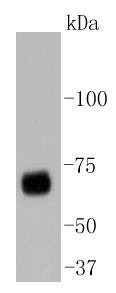  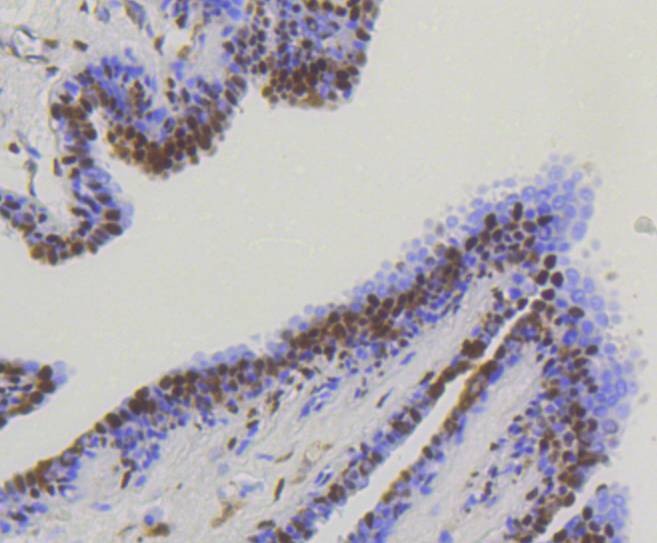 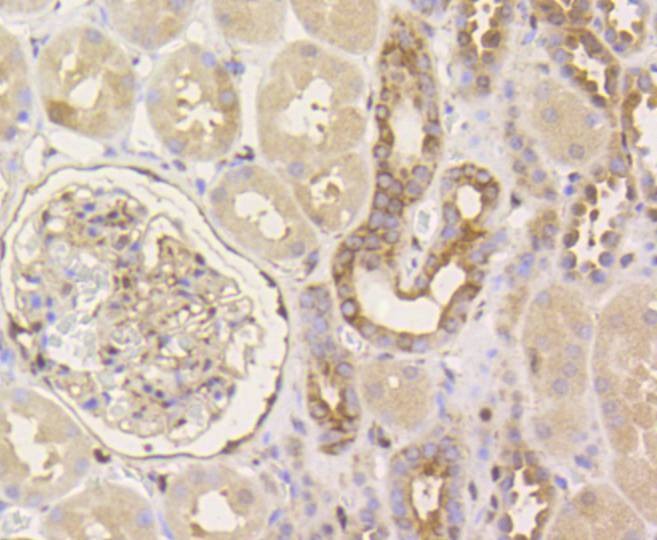 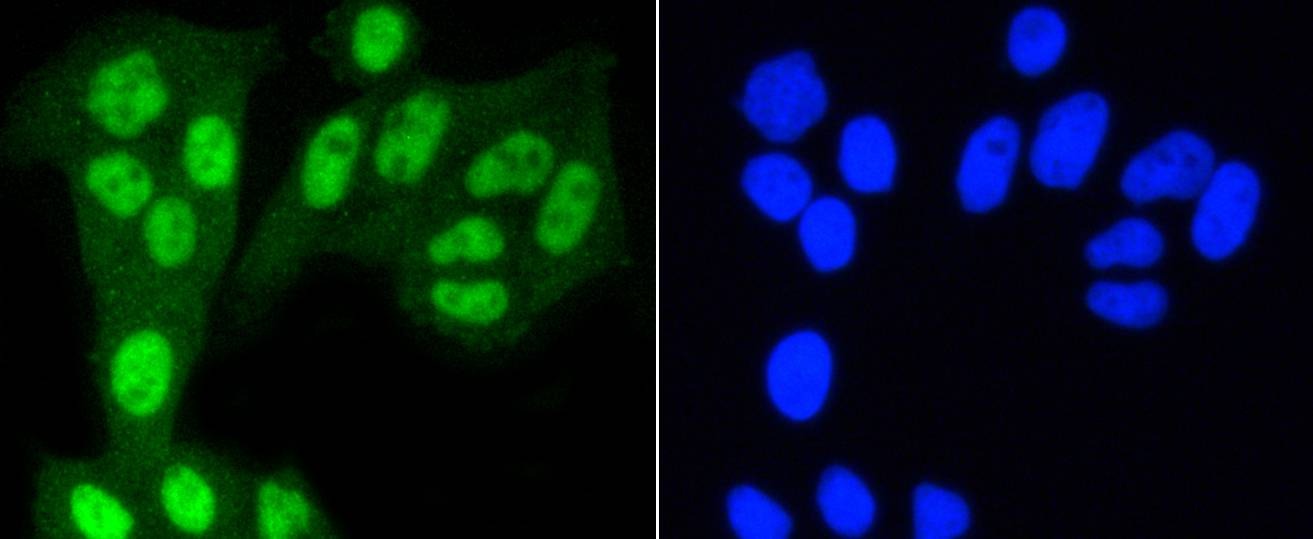 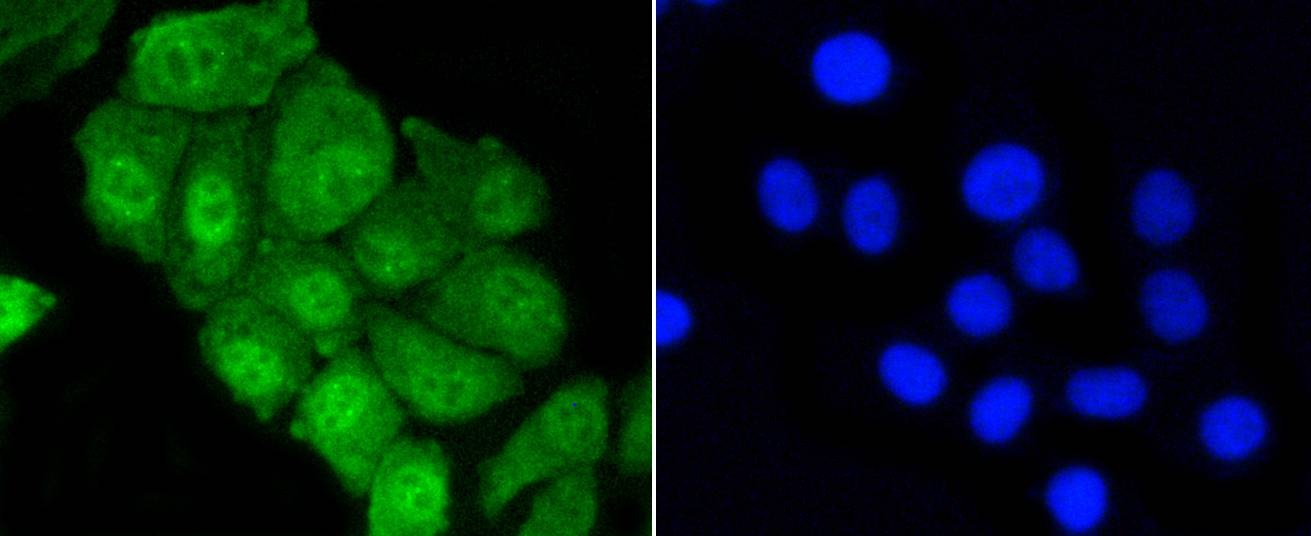 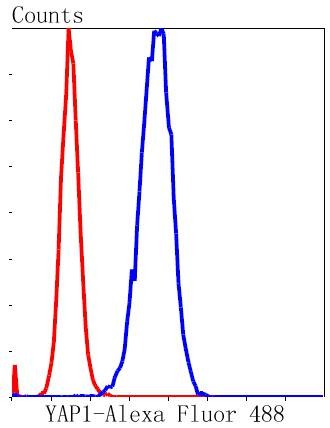 |
| Application | |
| Recommended Dose | WB: 1:1000-2000; IHC: 1:50-200; ICC/IF: 1:50-200; FCM: 1:50-100 |
| Antibody Type | Monoclonal |
| Host Species | Rabbit |
| Construction | Recombinant Antibody |
| Purification | ProA affinity purified |
| Appearance | Liquid |
| Formulation | 1*TBS (pH7.4), 1%BSA, 40%Glycerol. Preservative: 0.05% Sodium Azide. |
| Research Background | Commitment to cell division occurs at a point late in the G1 phase of the cell cycle, termed Start. Passage through Start requires the activation of the Cdc28 protein kinase by the cell cycle-regulated G1 cyclins. Maximal expression of these G1 cyclins is induced by the heterodimeric transcription factor complex composed of Swi4 (also designated Art1) and Swi6. Swi4 is the DNA-binding subunit of this complex. In addition to binding Swi4, Swi6 forms a complex with Mbp1. This complex activates S-phase cyclins and genes involved in DNA synthesis Rpb1 is the largest subunit of the yeast RNA polymerase II. Srb4 is a basal transcription factor that is essential for the establishment of the transcription initiation apparatus. Stress factors induce transcription through the induction of various transcription factors. Yap1 activates expression in response to oxidative stress, while Msn2 and Msn4 mediate transcription via the stress response element (STRE). |
| Conjucates | Unconjugated |
| Immunogen | Recombinant Protein |
| Uniprot ID |
| Molecular Weight | Theoretical: 65 kDa. |
| Stability & Storage | Store at -20°C or -80°C for 12 months. Avoid repeated freeze-thaw cycles. |
| Transport | Shipping with blue ice. |
| Size | Quantity | Unit Price | Amount | Operation |
|---|

Copyright © 2015-2025 TargetMol Chemicals Inc. All Rights Reserved.